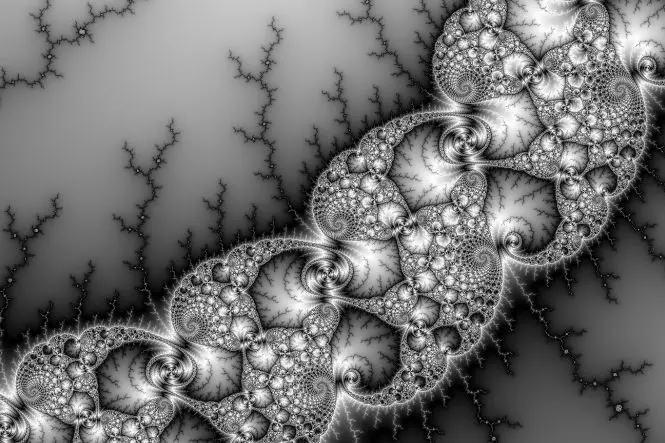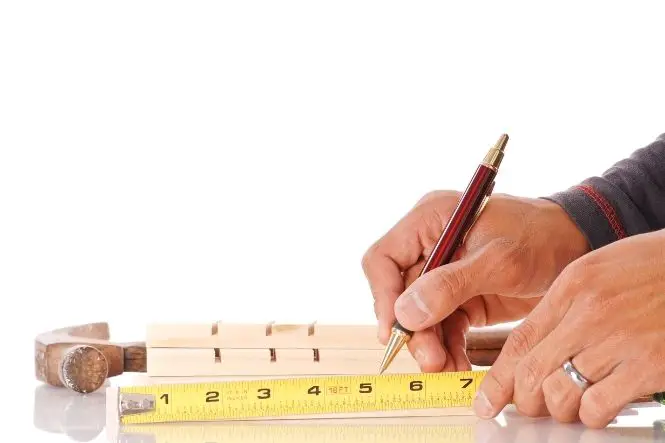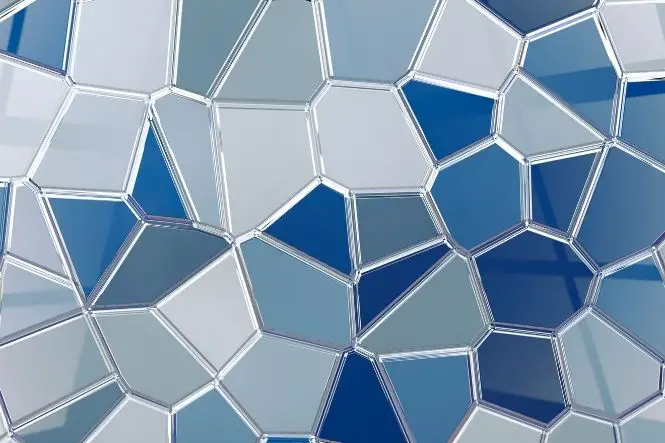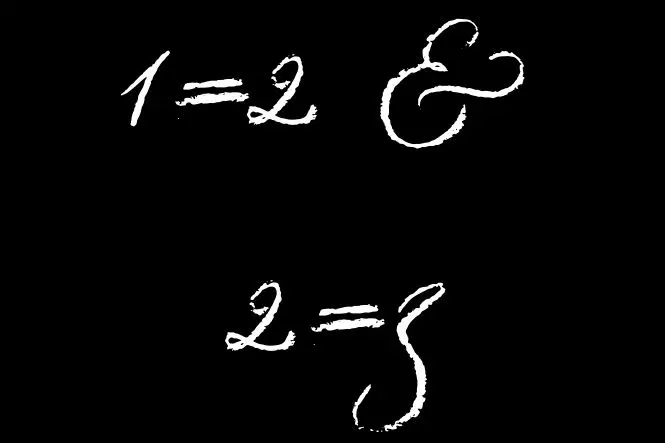A fractal is a pattern that repeats itself, getting smaller and smaller each time. Each part of the pattern looks like a smaller version of the whole thing. A tree trunk splits up into branches – these then split up into smaller and smaller branches and then twigs. This is called self-symmetry or self-similarity.
Look at the twigs at the end of a branch (easiest on a dead branch, or in winter) – the smaller and smaller twigs look like a tree in miniature.
Natural Examples of Fractals
Fractals are found in nature. An example is Romanesco broccoli, a light green type of cauliflower. A head of Romanesco broccoli is made up of florets, and each floret looks like a smaller version of the whole head. Looking more closely, each floret is made up of smaller florets that look like an even smaller version of the whole head. Using a magnifying glass, look at the broccoli head and see how small the florets get.
Another example is a fern. A fern leaf is made up of leaflets, each of which looks like the whole leaf. Each of the leaflets is made up of smaller leaflets, which look like the whole leaf. Using a magnifying glass, look at the leaf and see how small the leaflets get.
Look out for other examples of fractals in nature, such as clouds, mountain ranges, snowflakes, and rivers and tributaries.
Drawing Fractals
- Draw a fairly large equilateral triangle in pencil.
- Draw another equilateral triangle on each side, using the middle third of the line as the base, so that each side has a triangular bump in it. Rub out the base of each triangle – it will now look like a six-pointed star.
- On each side of the star, draw another equilateral triangle on each side, using the middle third of the line as the base, so that each side has a triangular bump in it. Rub out the base of each triangle.
- Keep repeating this on each side, until it gets too small to be able to draw the new triangles. The resulting picture will look like a snowflake, and is called a Koch snowflake, after the Swedish mathematician Helge von Koch.
- Draw a fairly large equilateral triangle.
- Mark a point half way along each side and join the points. This will make a new triangle inside the original one – colour in the new triangle.
- There will now be three smaller triangles that are not coloured in – mark a point half way along each side of each of these and join the points. This will make a new triangle inside the each of the three triangles – colour in the new triangle.
- There will now be nine even smaller triangles that are not coloured in – mark a point half way along each side of each of these and join the points. This will make a new triangle inside the each of the nine triangles – colour in the new triangle.
- Keep repeating this, until it gets too small to be able to draw the new triangles. The resulting picture is called a Sierpinski triangle, Sierpinski gasket or the Sierpinski sieve, after the Polish mathematician Waclaw Sierpinski.







